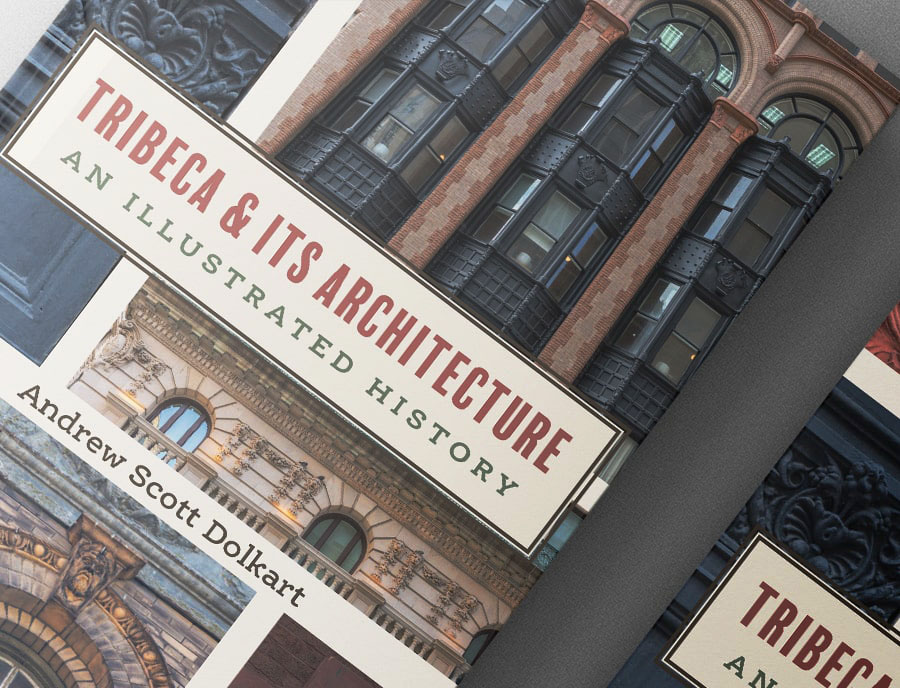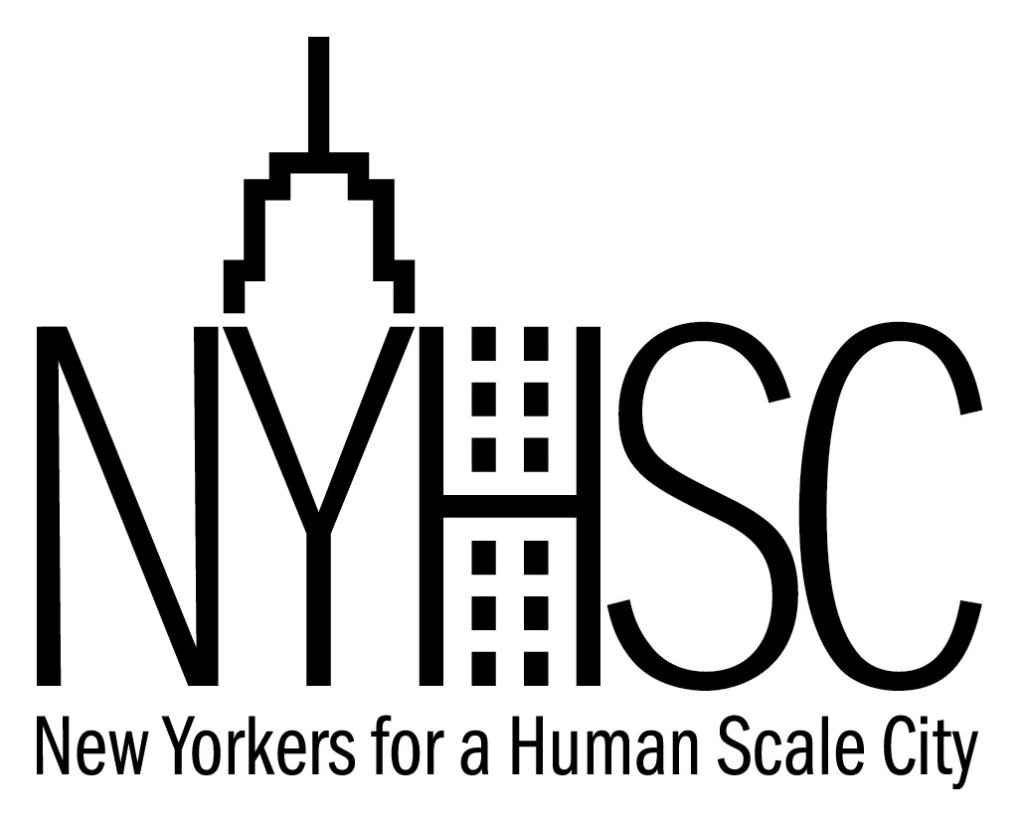
We are a coalition of 88 community and civic organizations advocating for a human-scale build-out of our city. The latest groups to join us are the Washington Square Association and the Committee to Protect Theodore Roosevelt Park.
Sign our petition here.
A Last Chance to Do Your Part to Fight ZQA
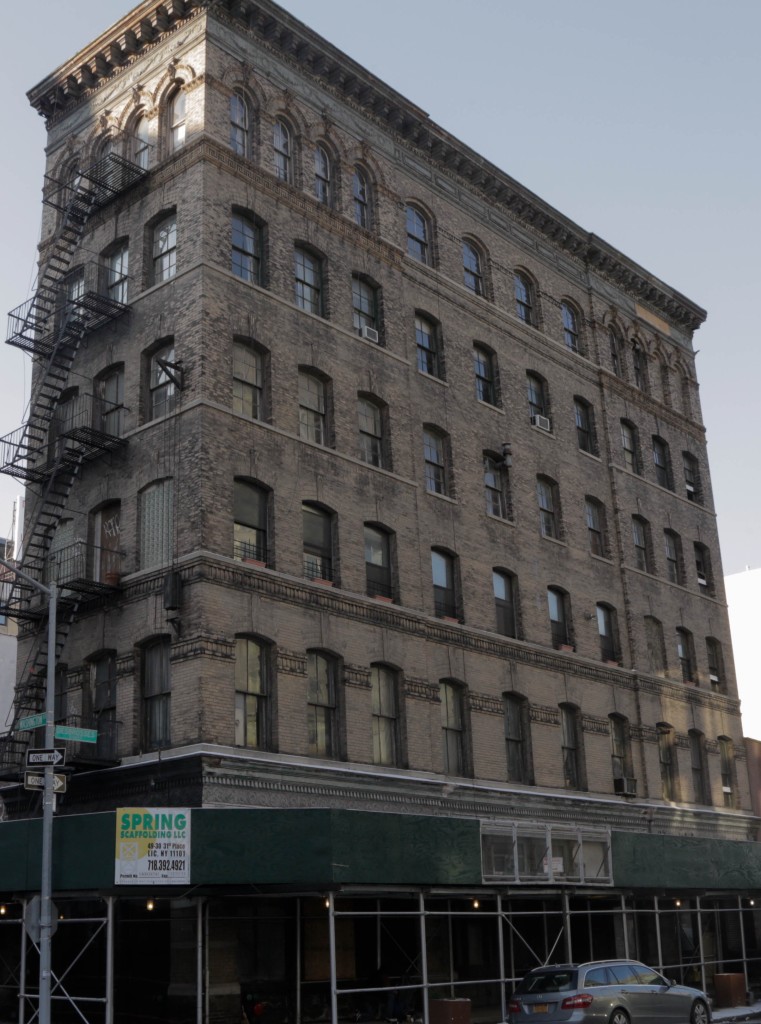

31 Desbrosses Street was a great historic building in Tribeca once filled with loft law tenants, all now displaced. The building was demolished in 2015 for high-rise luxury housing.
***********************************************
Dear Neighbors,
The City Council vote on the widely hated up-zoning proposals “ZQA” and “MIH” is scheduled for March 22nd. According to the Times, our City Council has already struck a deal with the Mayor to go forward, instead of opposing them as communities throughout the city have done. The Times reports on some minor changes that at first glance appear to be more tweaks than substance. We’ll know more when all is revealed to us. Here is what I could dig up.
The Landmarks Conservancy sent out this list of changes from their sources:
—The Sliver Law will remain in effect, ensuring that tall, skinny mid-block buildings will continue to be banned.
— There will not be an automatic five-foot height increase for market-rate developments below 96th Street in Manhattan.
— Back yard open space will be protected. The only exception will be for affordable senior housing developments and even that encroachment will be limited.
–The height bonus for affordable housing is reduced by 10 feet in many areas.
–Parking has greater protection in boroughs outside Manhattan, where public transportation is limited.
–The Council has ensured that more lower-income residents will qualify.
–The Administration also has promised a study of how to assist the lowest income residents find affordable housing.
DNA Info also has a summary of changes here and their list of changes is consistent with the Landmarks Conservancy list. You can read the Times article here.
What to think?
It is really not enough. Is it an attempt to divide Manhattan opposition from the rest of the city? What is meant a “non-automatic” 5-foot increase? What about protections of historic districts? What about community based plans that differ from what the Mayor wants? What is the fate of “contextual” zoning, which every community wanted to keep?
My own take is that the criticisms of these zoning proposals still stand: they will result in over-building hot neighborhoods with market-rate units. Such over-building is unlikely to depress rental prices in a given neighborhood (given the international nature of New York’s market) and that most of the supply/demand models in the economics literature come from suburban MacMansion territory, not New York City.
The most likely problem that will emerge is that ZQA will lead to over-building of luxury units, thus stimulating a kind of “hyper-gentrification” that is more likely to produce a net loss of affordable housing. This has has happened in other parts of the city, as documented in Hunter College Professor Tom Angotti’s forthcoming book. The process is likely to displace existing residents Moreover, the proposals ignore the problem that we currently have incentives to demolish what is left of the lower-rise historic fabric of New York (see the photo above of a historic building demolished to make way for luxury units, a demolition that displaced all the loft law tenants there.)
In sum, ZQA/MIH are still give-aways to real estate developers. The strategy that they embody is an unimaginative and destructive solution to the affordable housing problem.
So what is to be done?
The first act for us is to start thinking long term towards the next election cycle. We need to start choosing candidates for office in a better way and then electing Councilmembers who stand behind a human-scale platform for our city. We have to get rid of politicians who are supine to the dictates of the Real Estate Board of New York. We need to elect people who will repeal this zoning. That means it is time to renew your memberships with your local political clubs. Get active. Maybe it is time to start some new clubs as well. And perhaps finding outsider candidates are the way to go.
Second, we also need to develop a system to “grade” politicians and appointees on how well they uphold a human-scale agenda for our city. That’s a big project, but a worthwhile one.
The third task is to develop our own legislative agenda, one that includes a substantive affordable housing strategy that does not rely on massive private development of market-rate units. There are many ideas to that effect floating around. The job is to bring them all together into a reasonable white paper.
But that’s the bigger picture. Yet, it is true that vote hasn’t happened yet. Therefore, you should take this last opportunity to call up your City Council member and tell them to vote no on ZQA/MIH, that the “deal” does not save a proposal that had such flawed premises. Click here to reach a directory of all the City Council members. It has links to all their phone numbers. Tell your Councilmember not to go along with a ZQA/MIH “deal” and that you are watching their vote (we will report on their votes when it happens on the 22nd). If you would rather write a letter or have not yet done so, go here for a boilerplate letter that can be done in a flash with one email going to all members of the Council, plus the Borough Presidents and the Mayor – all in just one click.
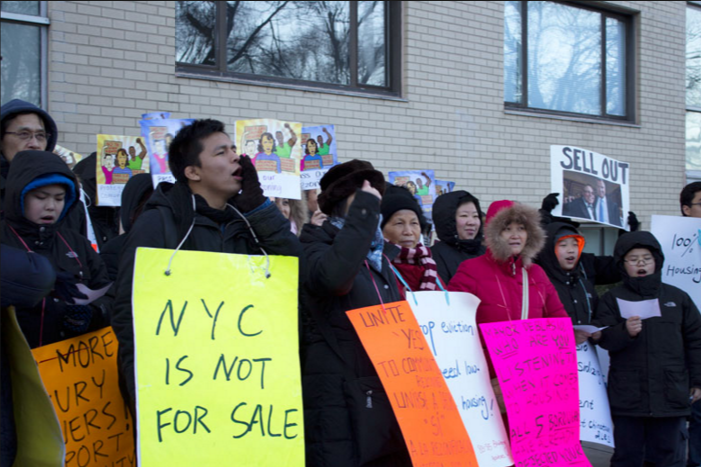
Quote of the Week:
Our quote of the week prize goes to pundit Maureen Dowd of the New York Times, whose column on Donald Trump came out on March 6th. She wrote: “Real Estate developers are con men by nature, trying to get what they want at the lowest price and sell it at the highest price, overpromising how great it’s going to be.”
Say it, Ms. Dowd. Spoken like a true New Yorker who knows what “over-promising” means in New York City. So why not apply that impeccable reasoning to the ill-designed up-zoning proposal (“ZQA”) that the Mayor wants in the name of “affordable housing?
Read Ms. Dowd’s full column here.
![]()
Six Unanswered Questions about the Up-Zoning Plan
Ed Jaworski writes us with some unanswered questions about ZQA/MIH. I don’t have the answers for him. If anyone does, please write us. But they are good questions.
“1. How much profit is considered acceptable/reasonable for a developer ? Or, is the profit dependent on how much they want to make, or the maximum they will push for?
2. Why does a billionaire need a substantial tax-payer subsidy to do anything?
3. When did developers jump on board East NY as a target area? And which developers?
4. How long ago did speculators begin buying up sites in, say, East NY?
5. What about the hidden “housing piggybank”: over $700 million in unpaid DOB/ECB fines–couldn’t that help pay for lots of affordable housing?
6. Why is City Planning ignoring the request to define the phrase “character of a neighborhood”?
from:
Ed Jaworski
President
Madison-Marine-Homecrest Civic Assn.”
Despicable Real Estate Ad of the Week: 180 East 88th St.
A reader sent in this ad which was a full-page in the Times on February 7th. We must have missed it when it first came out. The ad depicts a dark, black and white arch that looks right out of a drawing of the future city by artist Hugh Ferris in his 1929 book. The balcony features a 28-foot ceiling and a city-dominating view fit for any oligarch. At the lower left, the ad then brags: “the tallest condominium on the Upper East Side.”
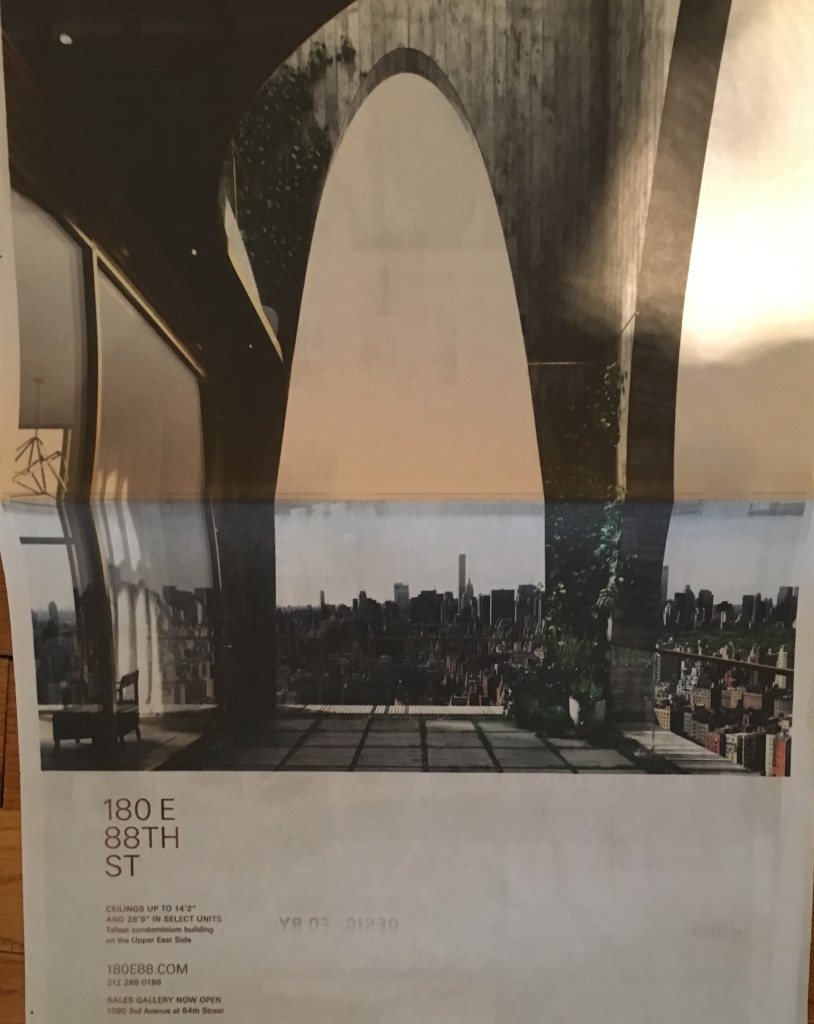
![]()
Hundreds of Vacant NYC Apartments – not part of the Affordable Housing Policy of our City?
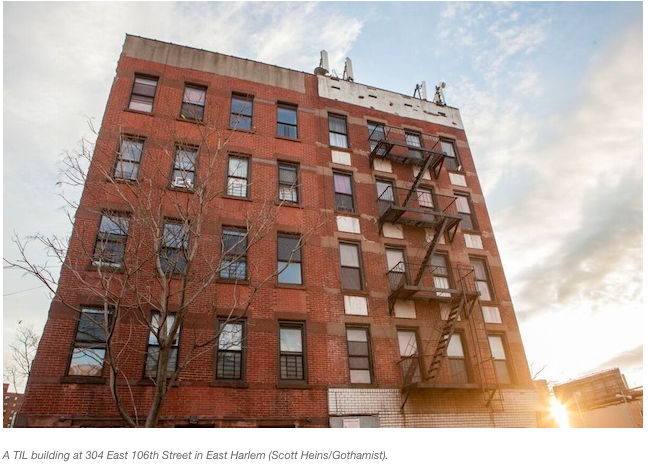
An article in the Gothamist last week highlighted a hole in De Blasio’s “affordable housing strategy. Why isn’t there more talk of this hole, one of a variety of alternative approaches to affordable housing that taken together might be an alternative to ZQA?
Turns out there are “hundreds of empty apartments in residential buildings stuck in a little-known Department of Housing and Preservation (HPD) program. These units could be rehabilitated into permanently affordable housing for less than the cost of development on private land.” The article is referring to buildings in HPD’s Tenant Interim Lease (TIL) program that could generate apartments for under $1,000/month. But as it is now, nothing is being done with these empty units. There are some residents in some of these half-occupied buildings but they are left to fend for themselves in decrepit conditions. Until the Mayor’s office allows for redistribution of funds for the program, these units will continue to be abandoned.
To read the excellent article from Gothamist, click here.
Eyesore of the Week: More Urban Homogenization
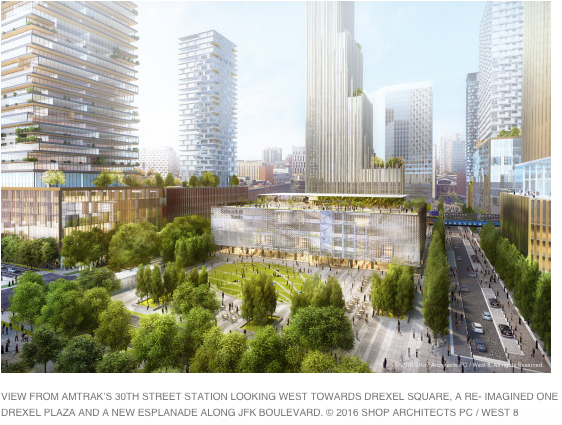
Hmm. Guess where this is. Look carefully. Doesn’t the building at the left look the Seaport proposal? Or the one in the back like 56 Leonard in Tribeca? Someone suggested this might be in Houston, where there is no zoning. But none of those guesses are correct. It is Philadelphia. But you were guessing as you did for a reason. SHoP Architects homogenizes yet another city!
With design plans unveiled this week, Philadelphia announced the development of an “innovation neighborhood.” According to Architect’s Newspaper, 14 acres of land next to the 30th Street Train Station will be turned into “Schuylkill Yards” – a complex designed to mix education, housing and entrepreneurship.
To read the full article about the project, click here.
High Tower Linked to Money Laundering
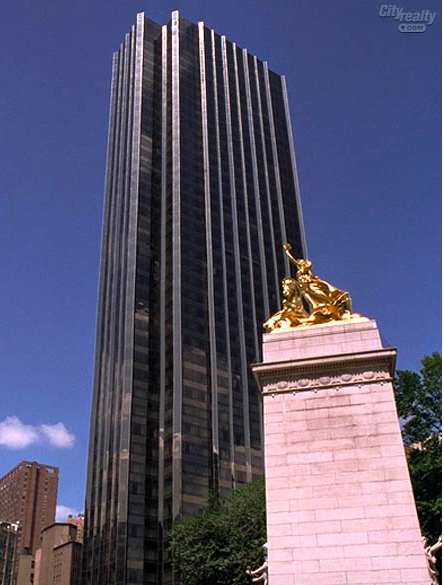
Malaysian business man, art enthusiast and celebrity-affiliated socialite, Jho Low has a residence in the tower at 1 Central Park West. Turns out he may be involved in one of the biggest money laundering schemes in recent history. The feds are currently investigating if Jho Low’s wild spending was courtesy of 1MDB (1Malaysia Development Berhad – a transformed company from a previously sovereign wealth fund), and if he was hiding assets or laundering funds. Go Feds!
To read the full article, click here.
The de-urbanizing effect of towers
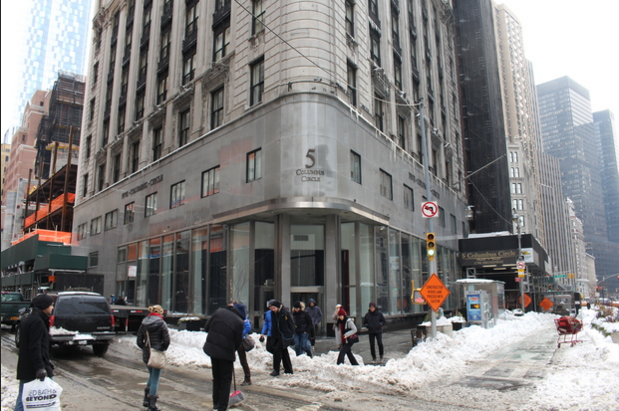
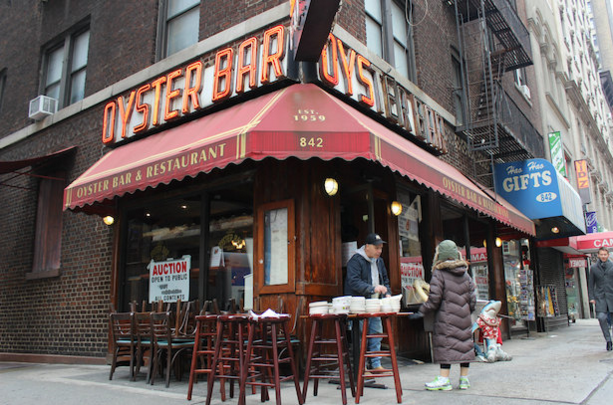
DNAinfo, this week, shed light on the sad state of affairs for more than a dozen vacant storefronts that line a six-block stretch of Broadway between Columbus Circle and Times Square. Is the problem the result of property owners holding out for sky-high rents expected once the long-awaited Nordstrom Tower is completed? One of the recent business casualties includes the site of the former Famous Oyster Bar which shuttered its doors in January 2014, after 50 years in business, and has yet to be replaced. Manhattan Borough President Gale Brewer has stated that she’s concerned that some landlords have opted to let their empty spaces remain empty while awaiting richer tenants in the future but that the immediate effect on the neighborhood is a disaster.”
To read the full article, click here.
![]()
“Real Affordability for All” Group Gives Way on Zoning Plan
See the Daily News story on this one here. A small coalition of some 50 very activist tenant groups and small housing non-profit developers just told the Mayor that they are okay with his zoning plan, which they had previously opposed to the point of promising civil disobedience. No news about what specifics they got in exchange for their support. But everyone wants to know: what did they get in exchange for their support? Why the change in heart after so many weeks of quite vocal opposition?
Fight for Roosevelt Park Continues – With a Twist
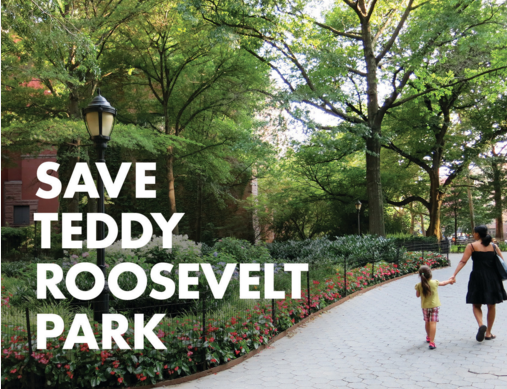

A new group has formed separately from the “Defenders of Teddy Roosevelt Park.” While the Defenders group saw the Museum’s compromise on development plans as a partial win, the new group, “Community United to Protect Theodore Roosevelt Park” does not. As so often happens with advocacy groups, people legitimately disagree on how to address the problem of over-development: those who want to compromise and make a deal and those who want to fight harder. It is a very tough call. To see the website and petition of the new group who wants to fight on (who has also joined our coalition) go here
![]()
Why We Need Clearer Height Restrictions and
Better Air Rights Transfer Regulations Sooner Rather than Later
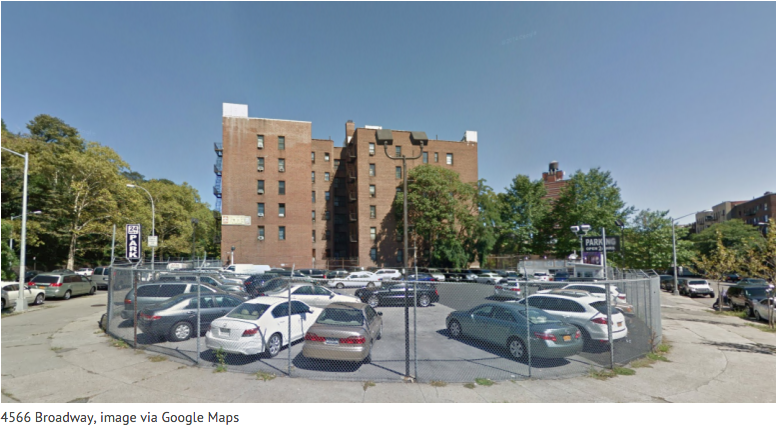
The lot seen above could be the next home to a 19-story apartment building. Permits have been filed for a “225-foot-tall development at the corner of Broadway and Nagle Avenue, across the street from Fort Tryon Park. The building would hold 171 apartments, stacked on top of 7,780 square feet of retail.” According to real-estate funded NY Yimby, “This project is much larger than zoning would normally allow here, and it’s clear that developer LargaVista Companies plans to apply for an upzoning or variance.” If the city approves a rezoning in this neighborhood, it would be a great loss in the fight for maintaining a human scale neighborhood.
To read the full article, click here.
![]()
Furman Center “Fact Finding”?
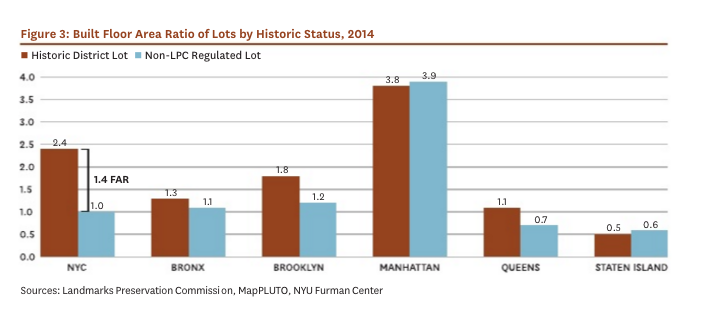
New York University’s real estate research center is called the Furman Center. It is heavily supported by Big Real Estate. That makes much of the Furman Center’s “fact-finding” work a bit perplexing in terms of understanding their objectivity. Bias can creeps in through a lot of pores. I am an avid reader of their reports and find that the very framing of issues is often problematic and reflects an unspoken anti-regulatory bias that is most articulated by economists like Edward Glaeser. And, as we all know, even with the scientific method, the very questions you ask reflect the biases you bring to the table. The questions and topics you pick to investigate should always be subject to the same bias scrutiny as one applies to analysis of specific data and to model building assumptions.
An example of how troubling all this can be is in the recent report the Furman Centre released called “Fifty Years of Landmarks” which asks a lot of less-than-useful questions that originate from the Edward Glaeser school of anti-historic district theorizing. How did they even decide what questions to ask and what data to compile? The only “fact” I found useful was that historic districts are no different in density than non-historic districts. Then the report goes on to what I have to conclude is race-baiting and class-baiting with “facts” such as: historic districts have more white people, higher than average incomes, and more educated people than do non-historic districts. The report then spends a ridiculous amount of time discussing the non-issue that there is less new construction going on in historic districts than in districts that have no protection (duh, isn’t that because historic districts are already built out and are there to preserve buildings?). That type of weird “fact” finding makes it seem less than an actual research project and more a public relations exercise of the Real Estate Board of New York. Ingrid Gould Ellen, the center’s faculty director said, “We hope these findings offer a useful snapshot of the nature of historic preservation in New York City.” But does it really? Why in fact is the Furman Center even interested in historic districts? For answers, let’s look at who is on the board of advisors of the Furman Center:
Stephen Ross, Chair of The Related Companies
Jason Muss, Principal Muss Development LLC
Janno Leiber, President World Trade Center Properties LLC
Bernard Falk, Loeb Partners Realty
Ronald MOelis, L + M Development Partners
Marc Wwisman, Cheltenham Enterprises
Michtell Rutter, Essex Capital Partners
Larry Silverstein, Silverstein Properties
Jon Vogel, AvalonBay Communities
Jesse Sharf, Gibson Dunn and Crutcher
That’s just a partial list. But you get the gist, I hope. It reads like the “who’s who” of the Real Estate Board of New York plus their financiers and hot-shot lawyers. And as we all know, the Real Estate Board of New York is one of the biggest and most vocal enemies of historic districts and landmarking legislation ever to walk into the City Council. Why would we assume academic neutrality from a research center structured in that way?
To read the full article in Crain’s and see the report, click here.
![]()
A Misguided Version of “Densification” on the Upper West Side
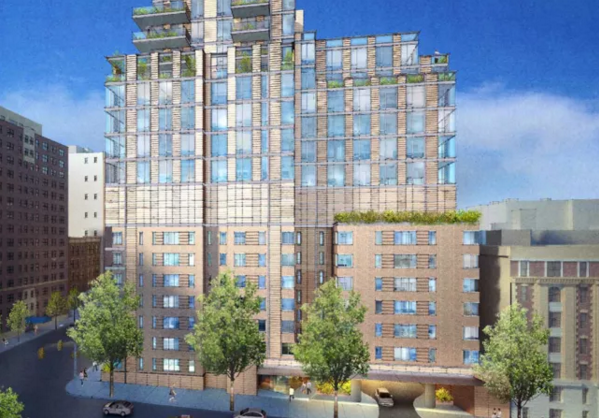
The first floor of a new building on the Upper West Side could start 80 feet up, on top of an older building. Does that mean that the addition to the 7-story building currently on West End Avenue won’t really be an addition at all? Apparently, it will just hover over the existing building. According to Curbed NY, “Other than the shaft for a new elevator and fire stairs that will run from the lobby to the new eighth floor, the buildings are totally separate.” The developer wanted to, “go bigger. Without displacing any current residents.” But many residents aren’t convinced as building and construction will cause great disruption. And why over-densify that stretch of West End?
To read the full article, click here.
![]()
FILM: “THE EAST HARLEM COMMUNITY FIGHT AGAINST THE MAYOR’S REZONING PLAN” (10 min.)
Please watch, and share, this new documentary featuring East Harlem residents. This is not just a struggle happening somewhere else to someone else.
The film can be viewed below (if you have the right browser). If you don’t have the right browser and see a white space, click here:

